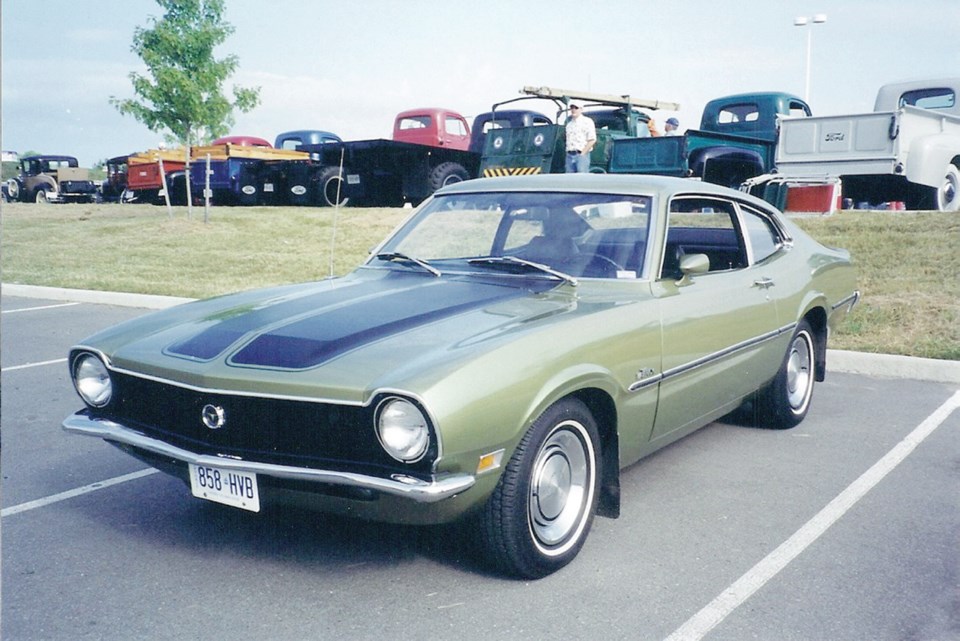What started as a trickle of imported cars to North America in the early 1950s rose to more than half a million annually by the end of the decade.
That prompted Detroit’s Big Three to introduce their 1960 compact Chevrolet Corvair, Ford Falcon and Chrysler Valiant, something the smaller American companies such as Nash and Kaiser-Frazer had done earlier. While these slowed the imports for a while, they gradually recovered and by 1970 their North America sales were back to more than a million a year.
So Ford tried again. Its market research indicated that a successful import fighter had to be economical to buy and run, and be sturdy and reliable. Its styling was to be contemporary but not flamboyant, and endure for several years.
It should offer more space, performance and convenience than the top-selling VW Beetle and provide the usual American comfort. It would be the American definition of an economy car.
Ford’s answer was the Maverick, which like the Falcon was a plain, no-nonsense compact whose mission was to repel intruders such as Volkswagen and new Japanese threats Toyota and Datsun (now Nissan).
To develop the Maverick quickly and economically, Ford used many existing corporate parts. The drivetrain came from the Falcon/Mustang, as did the suspension’s high-mounted coil springs in front and leaf springs and solid rear axle.
Standard power was Ford’s 2.8-litre, 105-horsepower, overhead-valve inline six with a 3.3-litre six optional. Power reached the rear wheels through a three-speed manual transmission, with automatic available.
The unit-construction, two-door sedan had a low silhouette and semi-fastback profile with just a hint of a spoiler. The vertically cut-off deck lid followed the aerodynamic precept of famous German aerodynamicist Wunnibald Kamm.
Maverick dimensions were larger than the target imports, particularly the Beetle. Its 2,616-millimetre wheelbase was 229 mm more than the VW’s. The Maverick’s overall length of 4,557 mm was 493 mm greater, and at 1,134 kilograms it was 272 kg heavier.
A welcome feature was the Maverick’s 12.3 cubic feet of luggage space, about twice the Beetle’s. A somewhat jarring note was the tiny standard 13-inch wheels that made the Maverick appear to have outgrown its tires (14s were optional).
The Maverick was introduced on April 17, 1969, as a 1970 model. Ford targeted young buyers with whimsical colours such as Anti-Establish Mint, Hulla Blue, Freudian Gilt, Original Cinnamon and Thanks Vermilion.
The Maverick succeeded the 10-year-old Falcon and sold well, 100,000 in the first three months, and topping 450,000 in its extra-long first model year.
Road & Track tested a Maverick with the larger 3.3-litre engine and three-speed automatic and recorded zero to 97 km/h in a respectable 14.5 seconds and a top speed of 153 km/h. The performance impressed the testers but they criticized the poor seats, slow steering, mediocre brakes and relatively poor fuel mileage.
R&T concluded that the Maverick would appeal to buyers who demanded little of their cars but wouldn’t really replace the imports, a prediction that proved correct. Ford realized this too, because it was already working on its even smaller 1971 Ford Pinto.
To polish the Maverick’s image a little, Ford introduced the jazzed up Maverick Grabber for 1971 with such additions as phoney hood scoop, dual racing mirrors and body-side stripes. In 1971, Mercury got its version of the Maverick, called the Comet.
For 1972, Ford offered a four-door Maverick on a stretched 2,791-mm wheelbase. Also, a third engine, a 4.1-litre, 145-horsepower six was now optional.
The Maverick soldiered on with small changes. The inevitable V-8 appeared, the corporate 5.0 litre; the 2.8-litre six was dropped in 1973. An improved seven main bearing (up from four) 3.3 six became the base engine.
The new mid-size Ford Granada was introduced in 1975 as the intended replacement for the Maverick, but when Maverick sales continued stronger than expected, helped by the 1973 oil crisis, Ford gave it a couple of extra years of life.
Although in its death throes, the Maverick got one last moment of glory in the form of the 1976 “Stallion” version with such adornments as flat black trim and horse’s head decals on the fenders.
The Ford Maverick left the scene in 1977, replaced by the more modern and efficient 1978 Ford Fairmont. It didn’t really repel the imports, but did accomplish its mission by being a solid, if unspectacular, performer in its market niche.
